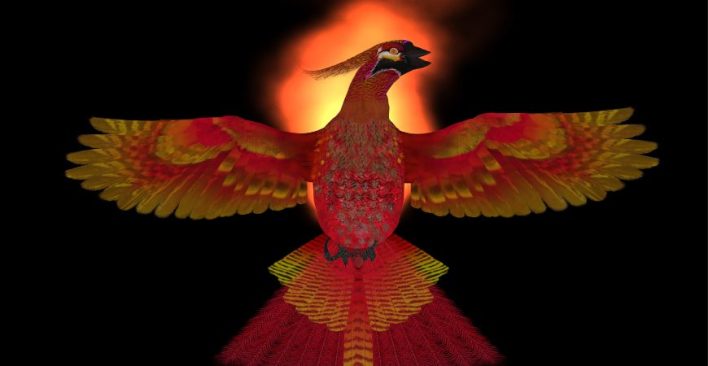Creative destruction, Artificial Intelligence, and how Talent teams can adapt

It’s hard to believe that over a decade has passed since a horrified world watched helplessly as a monumental financial crisis destroyed iconic businesses and entire economies descended into chaos. But humans are survivors, and once the dust settled, we all had to dig deep and find a way back.
And today, right across the globe, every large economy is growing.
With any economic shift, the status quo inevitably changes. We are now in an era of creative destruction where agile innovation is the key to business survival. Creative destruction is not a new concept. The process of technological innovation creating new approaches, causing old ways to be abandoned, has happened since the industrial revolution. The difference in this century, is the incredible pace at which it’s happening.

Company lifespans were shrinking rapidly before the GFC and the pace is accelerating. The average age of an S&P 500 firm is now under 20 years, a third of what it was in 1950. As an illustration, when Blockbuster said in 2008 that Netflix was not even “on the radar screen in terms of competition” they were blind to the rate of creative destruction. So was Nokia, who in 2007, arrogantly dismissed Apple as nothing more than a niche player in the mobile phone industry.
What is causing this rapid acceleration of creative destruction? Artificial Intelligence (AI) is certainly a major player in the drama, but the lead actors are humans. Technology didn’t conceive the iPhone or Netflix, people did.
Tech is the enabler, but innovative humans are the true force behind creative destruction. Therefore businesses fail to attract the right talent to drive innovation, risk extinction through lack of agility and creativity. PWC says, “in the next decade the ability of organisations to manage their global talent efficiently will mark the difference between success and failure”.
With the global economy once again growing, unemployment is at its lowest since 2001. As a result, companies are forced to complete strongly for new skills. Retaining talent is also more challenging as people increasingly know their value and move jobs readily. A recent ADP report said 60 percent to 70 percent of turnover is voluntary, with the highest driver being salary.
“Technology didn’t conceive the iPhone or Netflix, people did.”
People also increasingly seek flexibility and the gig economy is rising as work-life balance becomes more important. Australia ranks only behind Switzerland and the Netherlands in terms of part-time employees. Finding and retaining talent in this challenging environment is now the top issue for CEOs and the responsibility falls squarely on the shoulders of HR.
In this War for Talent, a major battle ground is Candidate Experience. Candidates want to be treated like consumers, but outdated, de-humanised hiring methods, including lengthy, arduous applications, have the complete opposite effect. Talent Board’s 2017 CandE report states that 67 percent of candidates received an automated “thank you for applying” email on applying for a job, with only 32 percent receiving a reminder about the next steps. Candidates want a simple, engaging, and effective process. If businesses cannot fix the problems of outdated, ineffective recruitment processes they will lose this crucial battle.
Sourcing is reactive to when a job vacancy opens. Recruiting without Talent Communities and pre-qualified Talent Pools of active, skilled candidates seriously lengthens time to fill. Pressure to fill roles reduces ability to focus on candidate and organisational alignment. Misalignment then leads to higher attrition rates, more frequent hiring and greater costs. Talent teams need to break this cycle and recruit far more proactively. This is where AI can really help.
While shifting corporate mindset requires new people as catalysts, it doesn’t mean that everyone else needs to leave, but we really need to adapt. Futurist Alvin Toffler said “the illiterate of the 21st century will not be those who cannot read and write, but those who cannot learn, unlearn, and relearn”. As Talent Acquisition professionals, we need to change in order to harness the power of AI.
But we need to discern how to leverage AI without swinging too far and further dehumanising an essentially people-centric function. Candidates want a consumer experience and it is critical to treat them well through every stage of hiring. Chatbots and matching algorithms may be great at the mouth of the hiring funnel, providing the immediacy that millennials seek, but once interest is expressed, human connection is essential to anchor the candidate emotionally into the process.
“The illiterate of the 21st century will not be those who cannot read and write, but those who cannot learn, unlearn, and relearn”
I strongly believe we cannot give the responsibility of relationship building and deep connection to a machine. However, AI can be our smart assistant, freeing up time, one of the most valuable weapons we have in the War for Talent and business continuity. By offloading repetitive tasks we can focus on what is important; building authentic, personal, engaged relationships with great candidates who are interested in our employer brand.
Around 300 million job applications are made every year in Australia, that means a huge amount of candidate rejection is happening. The resulting negative impact on internal and external candidates, on brands and on business outcomes is massive. By playing the role of the Digital Talent Assistant, AI can help significantly reduce rejection through proactive talent pipelining and pooling, which minimises the need to advertise job vacancies and resulting volumes of applications in the first place. This is foundational to achieving world class Candidate & Recruiter Experience.
Let’s consider this all from where we started, a world where creative destruction is an existential threat to businesses. To be agile and thrive we need to use our human to human skills to engage the talent that we need to flow into our organisations to bring innovation, creativity and emergent leadership. We need to be the disruptors, not the disrupted and let intelligent machines take on the low level tasks so we can focus on great candidates. But to achieve this we need to change the way we recruit, build new skills and maybe even relearn some of our people skills in that process.
Global recruitment expert, Greg Savage, sums up it up perfectly when he says “The future of recruitment is where art meets science . Where technology combines with highly sophisticated human influencing skills. We need to hone and re-train in these human interaction techniques”.
Image: Shutterstock
This article is contributed by LiveHire.
Talent Acquisition (TA) is on the cusp of a new wave of innovation and the 12th Australasian Talent Conference will be shining the light on it – say hi to Artificial Intelligence (A.I.). Find out more here.

Related articles
Leave a Reply
Sign up to our newsletter
Get a weekly digest on the latest in Talent Acquisition.
Deliver this goodness to my inbox!


